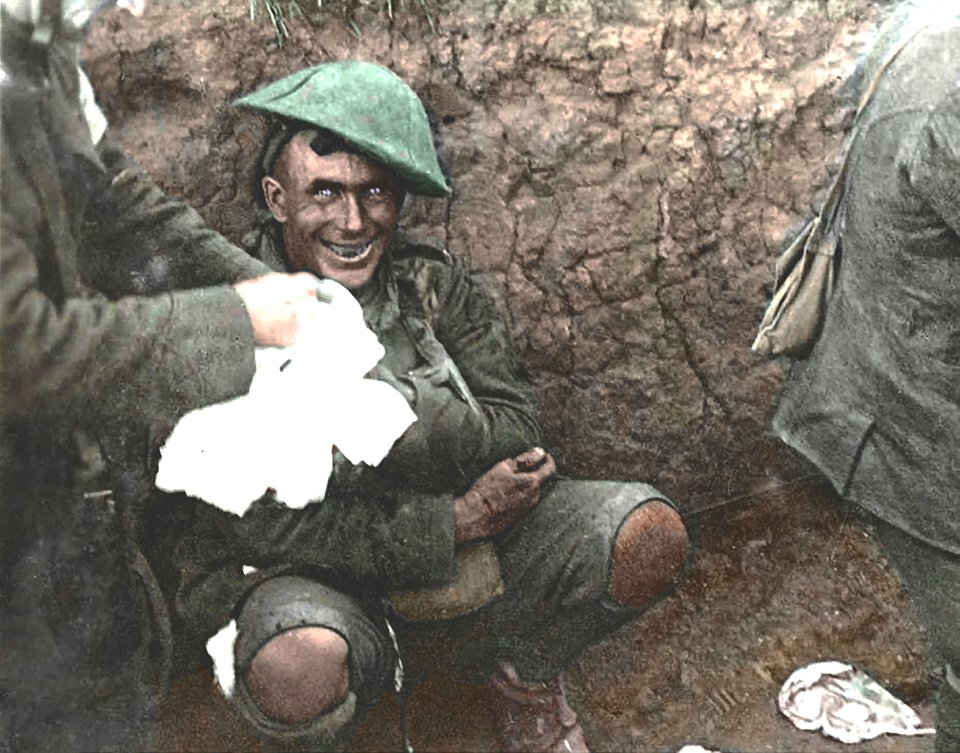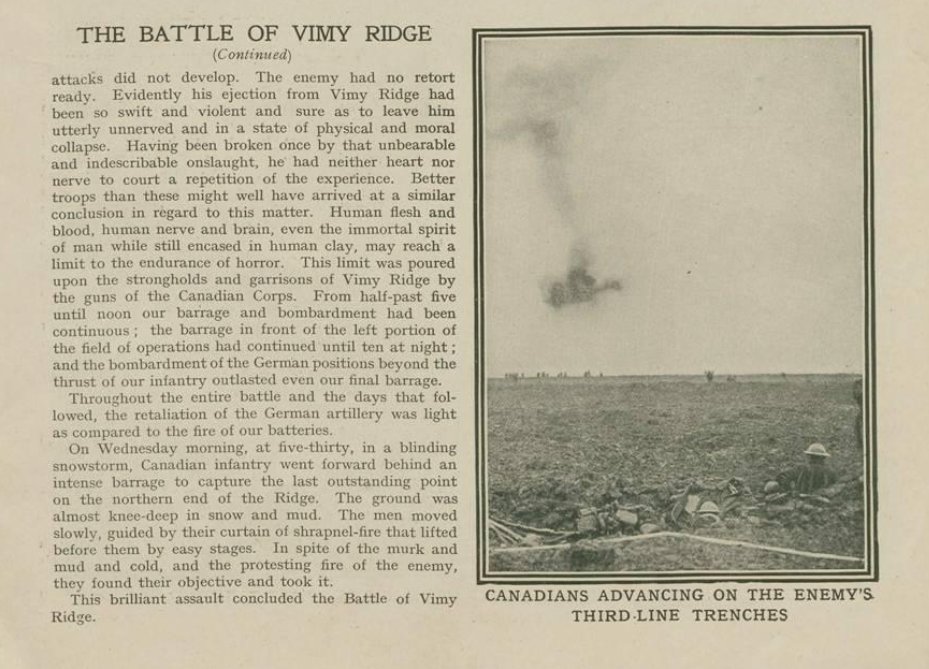
I’d like to start this thread by stating that the proper title of this photograph is: Dressing Wounded in Trench During the Battle of Courcelette. It was taken in September 1916 by Canadian official First World War photographer Ivor Castle. It belongs to LAC, and is PA 00909. 

I’ve been researching Castle’s life and career for about four years (although he didn’t leave much behind for us). Learn more about Castle (and importantly, how and why he and other official photographers were hired) here:
This photograph is the subject of several Reddit threads, has been colourized, is frequently shared over social media, and is featured on a few blogs. In all of these venues, it is claimed that the subject has “gone insane” and is “obviously” displaying signs of shell shock. 





Here’s a dodgy one for you to enjoy: atchuup.com/shell-shocked-…
And another (lol apparently this is a rare historical photograph? No, it’s readily available online from LAC and has been for YEARS): rarehistoricalphotos.com/shell-shocked-…
This photograph appears to have been the inspiration for “SCP-106”, a fictional character named Corporal Lawrence. You can watch his YouTube video here:
The photograph is often cropped closely around the one subject, though the original is a wider view of eight soldiers in a trench, grouped in twos. Castle also took this alternative view, entitled: First Aid being rendered to wounded at Courcelette, September 1916, LAC PA 00627. 

It’s actually not weird that Castle took a wide view of a scene and people have zeroed in on one aspect of it – it’s something he did often, and the press cropped his photographs before publishing. How often? I talk about it re: photos of Vimy Ridge in my upcoming book.
Castle’s photographs were also sometimes given false background stories. Don’t have time to watch the video above? Check out my thread here:
https://twitter.com/CarlaJeanStokes/status/1315310014848929792?s=20
Interestingly, one Reddit user claims that the photog knew the man had shellshock and took an empathic photographic of him rather than reducing the scene to something more propagandist – this is pretty out of character for Castle, who was Canada’s most propagandist photographer.
Which brings me to a crucial point: we cannot ascribe meaning to photographs - usually ever, but especially when we haven’t taken the time to understand who the photographer was AND the system of information that hired them.
I didn’t find a single instance of this image being shared with a proper credit to the photographer or the institution that commissioned his work.
But would the Canadian official photographer take photographs portraying shell shock and would the Canadian War Records Office label them as such and send them to newspapers around the world? Hmmm. Probably not. That’s a story for another day!
Now, this photograph is alleged to show Robert Lindsay Rogers. How did this connection happen? Well, dear reader, I haven’t a damn clue.
(Snagged this image from veterans.gc.ca)
(Snagged this image from veterans.gc.ca)

There is no mention of Rogers in the LAC photograph listing (based on original caption lists from the war). If we go directly to those caption lists (I have 2 copies of the bound ledgers photographed on my computer). No mention of Rogers in either.
There is no mention of Rogers being the subject of this photograph in any reputable online soldier-memory website. For example, you can read about Rogers here: veterans.gc.ca/eng/remembranc…
The photograph is labeled as Courcelette, and Rogers was there. That’s where he received (holy crap) a gunshot wound to the neck that turned out not to be fatal.
If we look back at both views of the photo, this soldier is not having his neck attended to. In Rogers’ own description, he was shot, had to wait until nightfall to crawl out of a trench with 2 others, get to a dressing station, and was put on a stretcher and then to hospital. 



There is no mention of him being cleaned up in a trench, or being photographed during that time. You can read his account here, and note that there IS the alternative view on this webpage, but Rogers is not ID'd as being the soldier being patched up. wartimeheritage.com/storyarchive1/…
Furthermore, even if this WAS Rogers (there doesn’t seem to be any reputable proof that it is, if you know more, please hit me up!) we would still need to establish that Rogers suffered from what was then colloquially known as shell shock.
There is no evidence of shell shock or neurasthenia in Rogers’ service file. It does, of course, make extensive mention of his gunshot wound, as well an infected toe. He reports to a medical board to review his combat fitness after his wound had healed, and returns to the front.
Interestingly, his late mother is pointed out as “mentally deficient.” But my albeit quick reading of 100+ year old handwriting doesn’t convince me that he was. Download his service file here:
central.bac-lac.gc.ca/.item/?op=pdf&…
central.bac-lac.gc.ca/.item/?op=pdf&…
• • •
Missing some Tweet in this thread? You can try to
force a refresh











